Abstract
Haynes, W. C. (Northern Regional Research Laboratory, Peoria, Ill.), and Lenora J. Rhodes. Spore formation by Bacillus popilliae in liquid medium containing activated carbon. J. Bacteriol. 91:2270–2274. 1966.—Heretofore, it has not been found possible to evoke sporulation of Bacillus popilliae in liquid culture. We have discovered that sporulation will occur in tryptone-glucose-yeast extract broth shaken cultures if activated carbon (charcoal) is present during growth. The spores so engendered have survived drying in air and subsequent storage for several months as dry films and also in dry soil, sand, and a mixture of powdered calcium carbonate and talc. Furthermore, the longevity of cultures, even when spores are absent, is extended, in cultures containing activated carbon, to several weeks at a population of millions of cells per milliliter. This extension of life is the result of a marked change from rapid decline in numbers to an almost stationary population.
Full text
PDF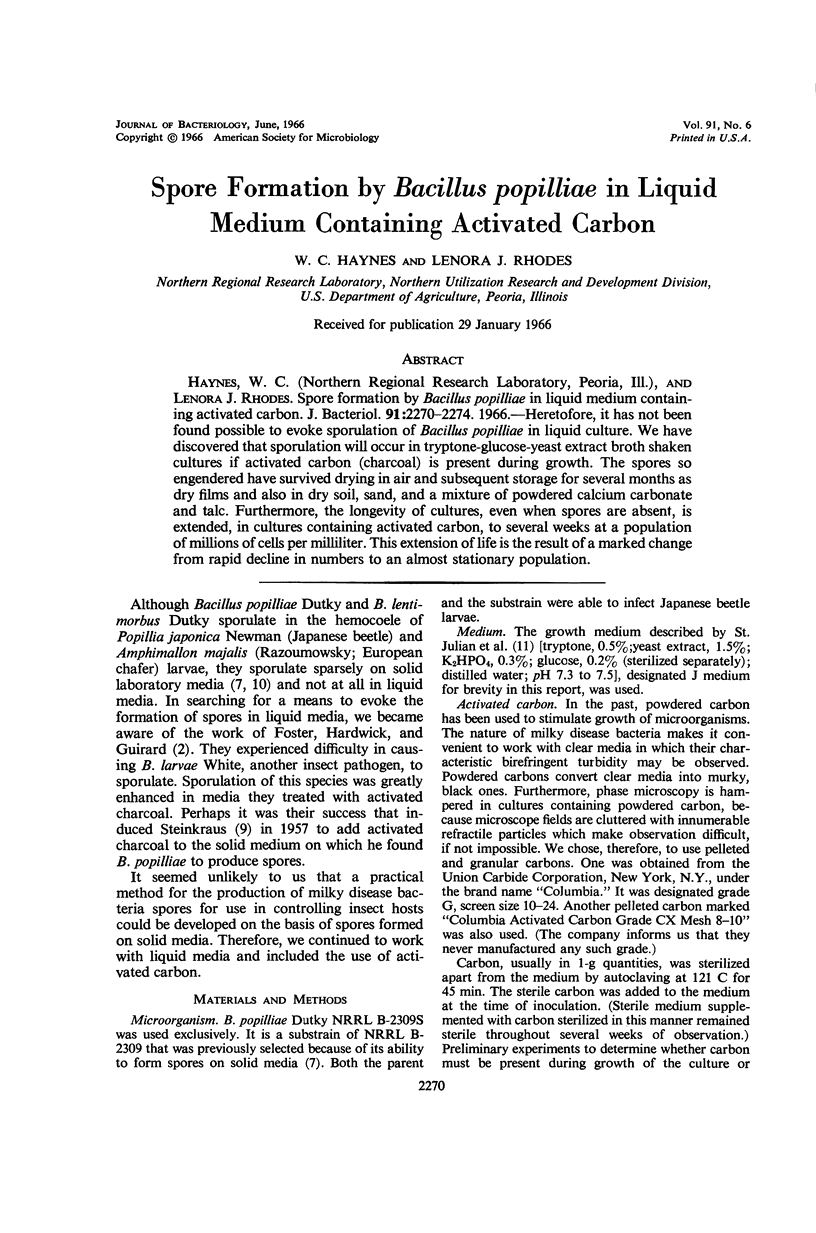
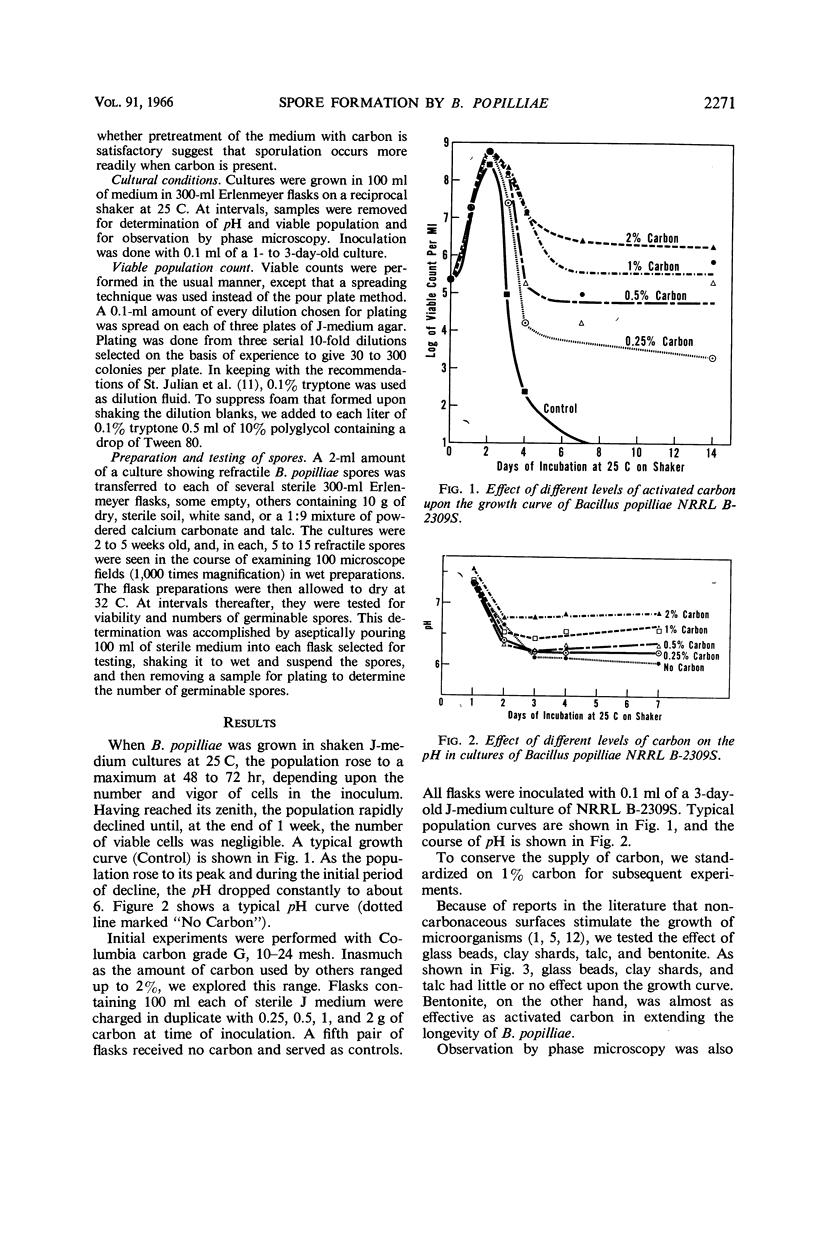
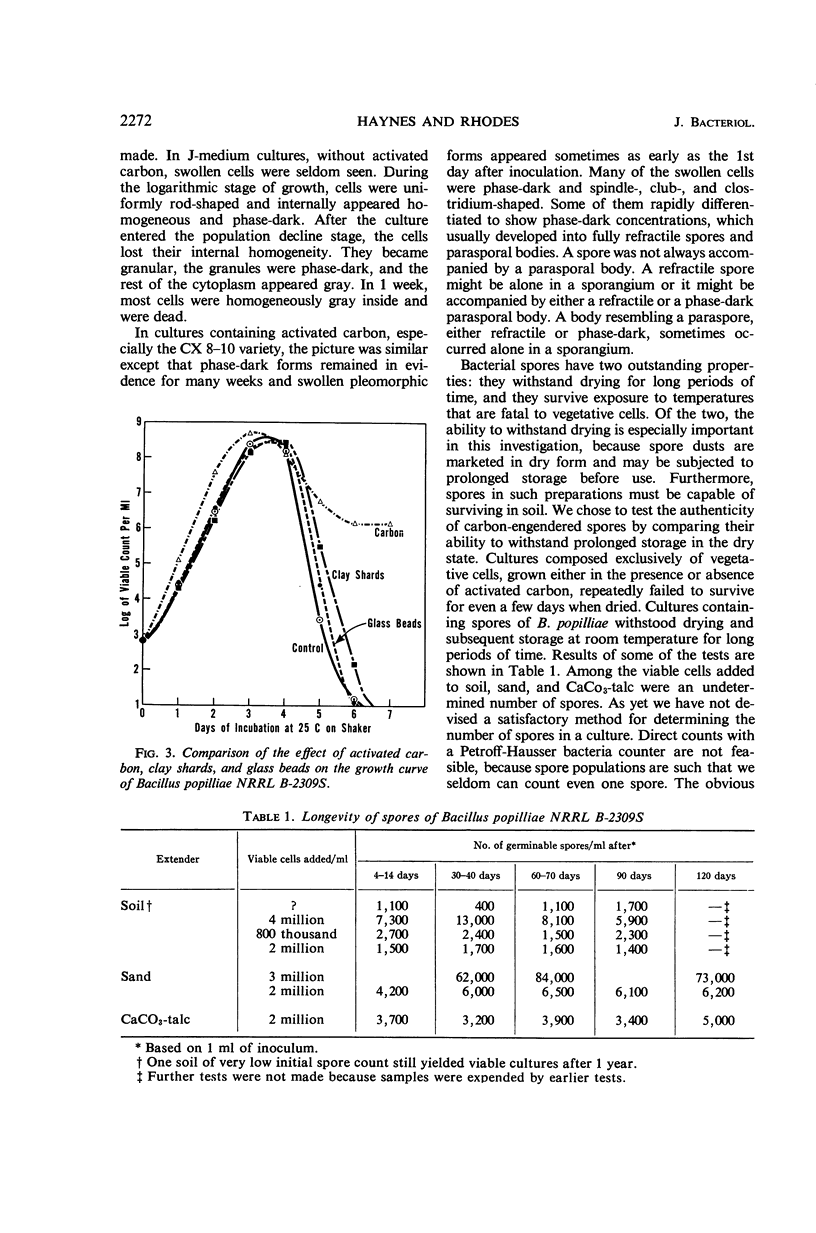
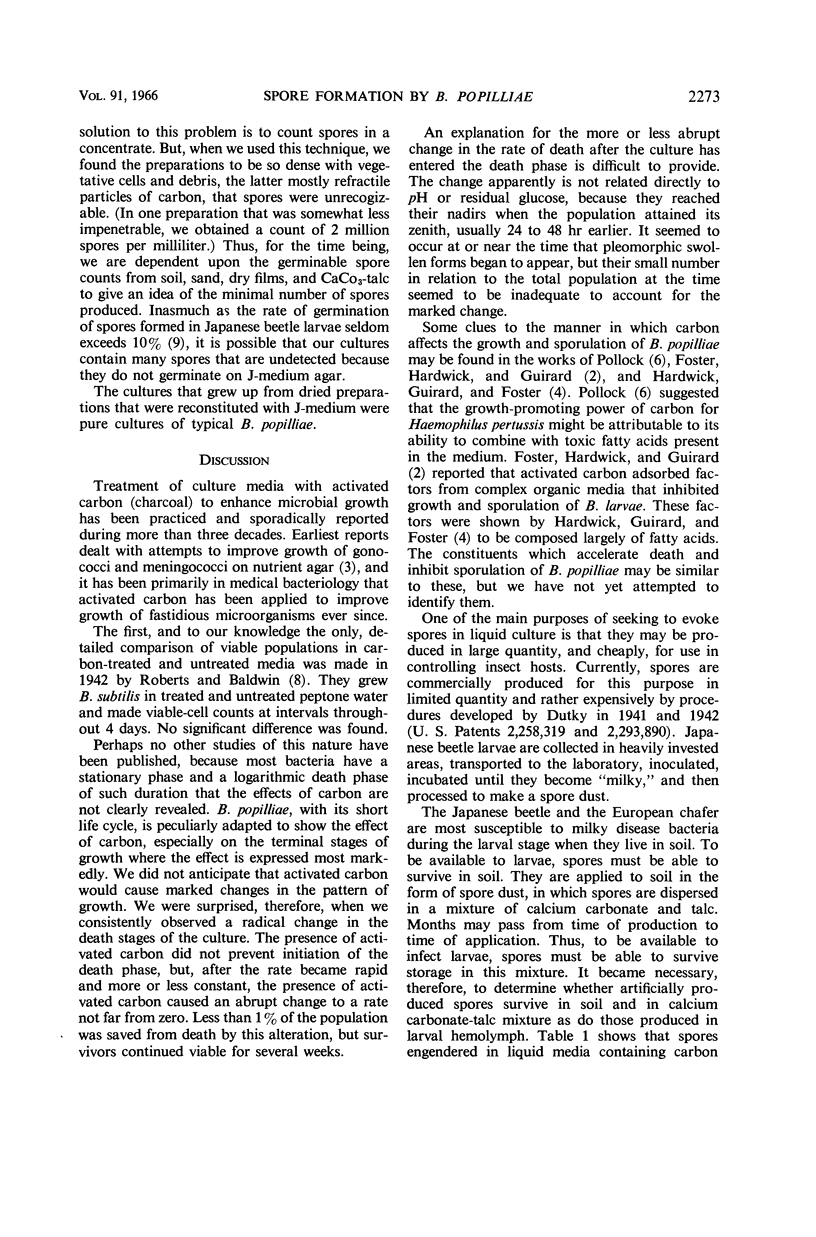
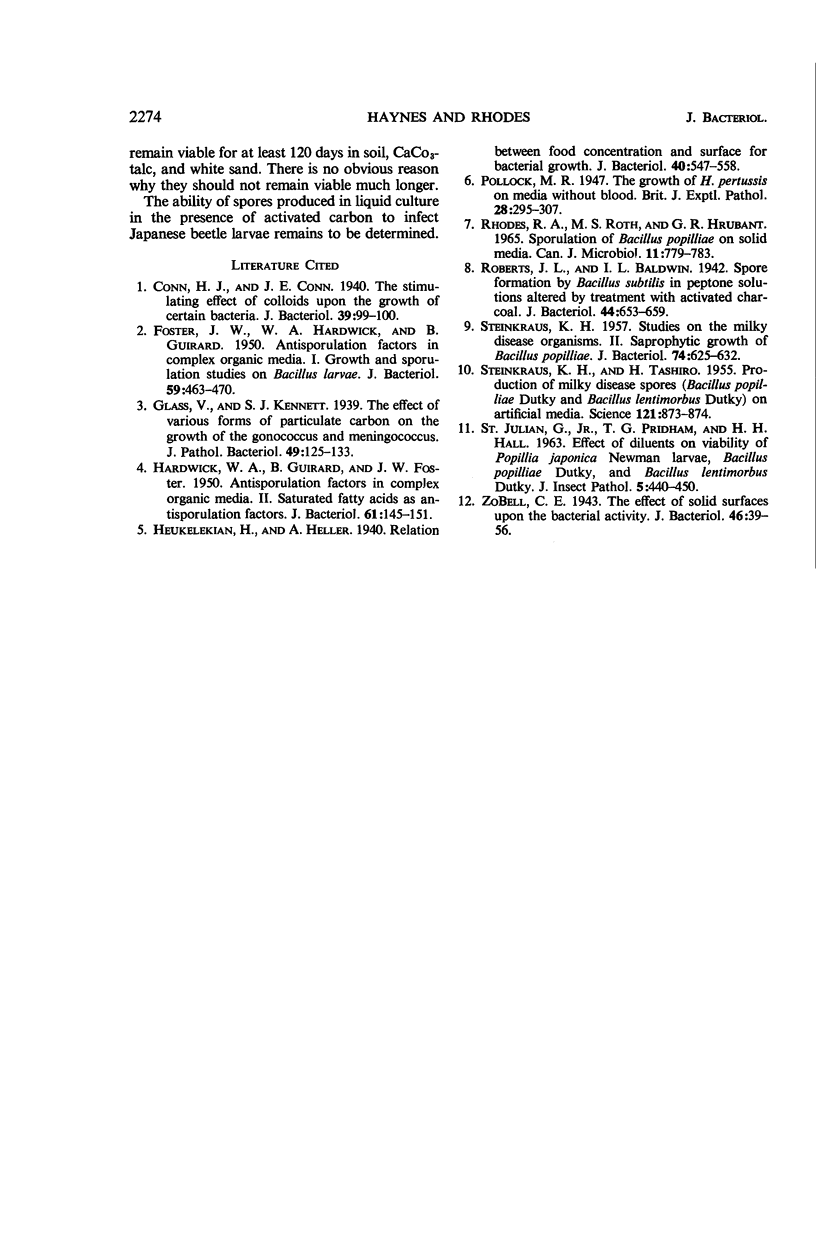
Selected References
These references are in PubMed. This may not be the complete list of references from this article.
- FOSTER J. W., HARDWICK W. A., GUIRARD B. Antisporulation factors in complex organic media. I. Growth and sporulation studies on Bacillus larvae. J Bacteriol. 1950 Apr;59(4):463–470. doi: 10.1128/jb.59.4.463-470.1950. [DOI] [PMC free article] [PubMed] [Google Scholar]
- HARDWICK W. A., GUIRARD B., FOSTER J. W. Antisporulation factors in complex organic media. II. Saturated fatty acids as antisporulation factors. J Bacteriol. 1951 Feb;61(2):145–151. doi: 10.1128/jb.61.2.145-151.1951. [DOI] [PMC free article] [PubMed] [Google Scholar]
- Heukelekian H., Heller A. Relation between Food Concentration and Surface for Bacterial Growth. J Bacteriol. 1940 Oct;40(4):547–558. doi: 10.1128/jb.40.4.547-558.1940. [DOI] [PMC free article] [PubMed] [Google Scholar]
- Rhodes R. A., Roth M. S., Hrubant G. R. Sporulation of bacillus popilliae on solid media. Can J Microbiol. 1965 Oct;11(5):779–783. doi: 10.1139/m65-105. [DOI] [PubMed] [Google Scholar]
- Roberts J. L., Baldwin I. L. Spore Formation by Bacillus subtilis in Peptone Solutions Altered by Treatment with Activated Charcoal. J Bacteriol. 1942 Dec;44(6):653–659. doi: 10.1128/jb.44.6.653-659.1942. [DOI] [PMC free article] [PubMed] [Google Scholar]
- STEINKRAUS K. H. Studies on the milky disease organisms. II. Saprophytic growth of Bacillus popilliae. J Bacteriol. 1957 Nov;74(5):625–632. doi: 10.1128/jb.74.5.625-632.1957. [DOI] [PMC free article] [PubMed] [Google Scholar]
- STEINKRAUS K. H., TASHIRO H. Production of milky-disease spores (Bacillus popilliae Dutky and Bacillus lentimorbus Dutky) on artificial media. Science. 1955 Jun 17;121(3155):873–874. doi: 10.1126/science.121.3155.873. [DOI] [PubMed] [Google Scholar]
- Zobell C. E. The Effect of Solid Surfaces upon Bacterial Activity. J Bacteriol. 1943 Jul;46(1):39–56. doi: 10.1128/jb.46.1.39-56.1943. [DOI] [PMC free article] [PubMed] [Google Scholar]


